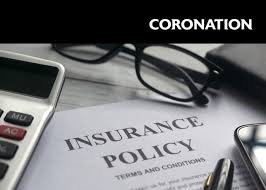How to Read Your Insurance Policy Like a Pro

Most people don’t read their insurance policies — and those who do often walk away confused by the complex language. But understanding your insurance documents is crucial. Whether it’s health, auto, home, or life insurance, knowing what your policy covers (and doesn’t) can save you thousands and prevent major frustrations during claims.
In this guide, we’ll teach you how to read your insurance policy like a pro, break down confusing jargon, and show you what sections to pay attention to. By the end, you’ll feel more confident reading your policy and making informed decisions.
Why You Should Read Your Insurance Policy
Many policyholders simply trust the agent or assume the policy “covers everything.” Unfortunately, that’s not always the case.
By reading and understanding your insurance coverage, you can:
- Avoid surprise claim denials
- Know your deductibles and limits
- Spot any coverage gaps
- Prevent under- or over-insuring
According to the Insurance Information Institute, millions of Americans are underinsured simply because they don’t fully understand their policies.
Key Sections of an Insurance Policy
Let’s break down the typical structure so you know where to focus your attention.
1. Declarations Page (Dec Page)
Think of this as your policy summary. It includes:
- Policyholder name
- Policy number
- Coverage types and limits
- Premium amount
- Effective and expiration dates
✅ Pro Tip: Always double-check that your personal details and coverage amounts are accurate here.
2. Insuring Agreement
This section outlines what the insurance company promises to do — typically to pay for losses or cover liabilities as long as the terms are met.
This is where you’ll find the general scope of coverage and who is covered under the policy.
3. Definitions
Policies often use specialized terms. This section explains what those terms mean in the context of your coverage.
Examples:
- Actual Cash Value (ACV) – The value of an item after depreciation.
- Replacement Cost – What it costs to replace an item at today’s prices.
💡 For a full glossary, visit the NAIC Insurance Terminology Guide.
4. Exclusions
One of the most critical parts of your policy. This section lists what is NOT covered.
Examples:
- Floods (not included in standard homeowners policies)
- Intentional damage
- Business use of personal vehicle
✅ Pro Tip: Always read exclusions carefully to avoid surprise denials during claims.
5. Conditions
This outlines the rules you and your insurer must follow. It may include:
- How to file a claim
- Timelines for reporting losses
- Cooperation requirements during investigation
6. Endorsements (or Riders)
These are amendments or additions to your standard policy. They can expand, limit, or clarify coverage.
For example:
- Jewelry rider for high-value items
- Sewer backup endorsement in home insurance
Tips to Read Insurance Documents Like a Pro
🔍 1. Start With the Declarations Page
Scan it first — this gives you a snapshot of your coverage. Verify all the personal details and coverage types.
📘 2. Highlight Key Terms
Use a highlighter or digital tool to mark:
- Deductibles
- Coverage limits
- Named perils or conditions
🧾 3. Compare With What You Were Told
Always compare your policy with what your agent or broker explained. If something’s missing or unclear, ask questions before a loss occurs.
🔄 4. Review It Annually
Your needs can change — especially after buying a home, having a child, or upgrading your vehicle. Revisit your policies once a year and adjust accordingly.
🛡️ 5. Don’t Ignore Endorsements
They might be at the end of the document but could contain crucial changes to your coverage.
Common Mistakes People Make When Reading Policies
- Skipping the fine print: Many people overlook the exclusions and conditions.
- Assuming one policy covers everything: For example, homeowners insurance doesn’t cover floods — you need a separate flood policy.
- Misunderstanding deductibles: Some policies have different deductibles for different coverages.
How to Ask the Right Questions
Not sure what something means? Use these questions to clarify with your insurer:
- What exactly is covered under this section?
- What are the exclusions?
- Is this replacement cost or actual cash value?
- Are there limits for certain categories (like electronics or jewelry)?
- Are there situations where this coverage wouldn’t apply?
Outbound Resources to Help You Understand Insurance Policies
Here are some excellent resources if you want to explore more about how to read insurance policies:
- Insurance Information Institute – Understanding Insurance
- NAIC Consumer Resources
- NerdWallet’s Insurance Explainers
- Investopedia: Insurance Basics
These platforms explain insurance terms, real-life examples, and step-by-step guides.
Final Thoughts: Empower Yourself Through Knowledge
Reading your insurance policy might not be exciting, but it’s essential. When you read your insurance policy like a pro, you avoid nasty surprises, ensure the right coverage, and make empowered decisions for your future.
✅ Don’t wait until disaster strikes to understand what your insurance does (and doesn’t) cover.
✅ Take 30 minutes this week to review your policy.
✅ Ask your agent questions — they’re there to help you!

![Pet Insurance Plans Worth Considering in the USA [2025]](https://snokidoplayzone.store/wp-content/uploads/2025/07/images-19.jpg)


